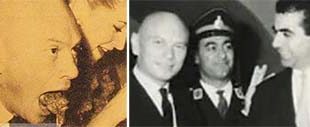Chapter 3: The 10th National Assembly — A Convergence of Politics and Fashion
June of 1935 marked the opening of the 10th term of the National Assembly (Majles), a pivotal event in the political life of Iran. Delegates from across the nation arrived in Tehran — tribal leaders from Kermanshah, merchants from Isfahan, lawyers from Tabriz, and technocrats from Shiraz.
The chapeau—a French term simply meaning “hat”—has a long and multifaceted history. Known in many Western countries specifically as the fedora, this headpiece has become one of the most iconic and enduring symbols of 20th-century fashion. Though its form and function have evolved over time, the fedora has remained closely associated with societal status, gender roles, cultural identity, and even political movements.
At its core, a fedora is a brimmed hat that is typically creased lengthwise down the crown and “pinched” near the front on both sides. Traditionally made from felt—often derived from wool, rabbit, or beaver fur—fedoras can also be crafted from a variety of materials including leather, cotton, linen, hemp, and straw, depending on climate and fashion trends. The flexibility of the design has allowed the hat to persist through changing styles and shifting social norms.
Origins and Early Popularity
Though the name “fedora” originated from a play titled Fédora by Victorien Sardou, in which actress Sarah Bernhardt wore a soft-brimmed hat while playing the role of Princess Fédora Romanoff, the style quickly transcended the stage. By the late 19th century, around 1891, the fedora had made its way into the wardrobes of fashionable men and women alike. However, it was in the early 20th century that the fedora cemented itself as a staple of masculine attire.

